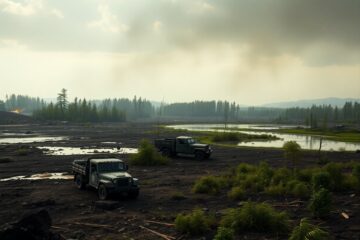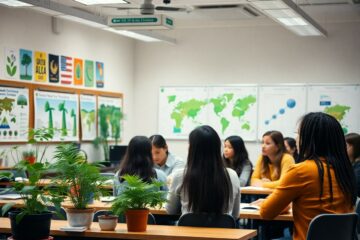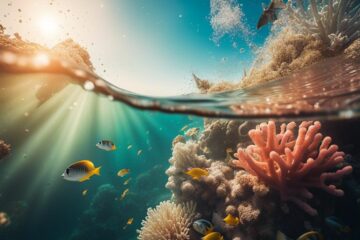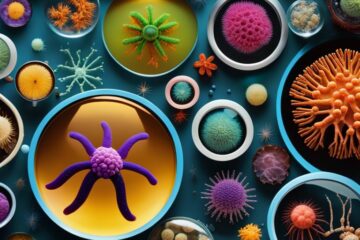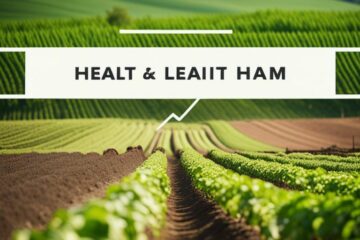With over 75% of the world’s flowering plants relying on pollinators like bees and butterflies, your role in protecting these vital species is more important than ever. These tiny creatures contribute to food production and the overall health of ecosystems, making their decline a serious concern for humanity. By learning how to Attract Bees & Butterflies: The Importance of Pollinators and supporting their habitats, you can help ensure a healthier environment for future generations. Your actions can make a positive difference in conserving biodiversity and enhancing food security.
Table of Contents
Key Takeaways:
- Pollinators like bees and butterflies play a vital role in the ecosystem by facilitating the reproduction of flowering plants, which in turn supports food production and biodiversity.
- Many crops, including fruits, vegetables, and nuts, depend on pollinators; their decline could negatively impact global food security and the economy.
- Habitat loss, pesticide use, and climate change are significant threats to pollinator populations, emphasizing the need for conservation efforts.
- Supporting pollinators can be achieved through actions such as planting native flowers, reducing pesticide use, and creating habitats that sustain their populations.
- Community awareness and education about the importance of pollinators can inspire collective action towards protecting these important species.

Understanding Pollinators
A key component of the ecosystem, pollinators play an imperative role in the reproductive processes of flowering plants. Without them, many species, including some of our favorite fruits and vegetables, would struggle to thrive. Understanding how pollination occurs and the different types of pollinators involved can deepen your appreciation for these vital creatures.
Definition of Pollination
By definition, pollination is the transfer of pollen from the male anther of a flower to the female stigma. This process is fundamental for fertilization, allowing plants to produce seeds and fruit. Pollination can occur through various means, including wind, water, and, most importantly, animals. When insects such as bees and butterflies move from flower to flower in search of nectar, they inadvertently carry pollen along with them, ensuring that plants can reproduce effectively.
Pollination not only facilitates plant reproduction but also contributes to the genetic diversity of plant populations. By spreading pollen between different flowers or species, pollinators help to maintain healthy ecosystems and promote biodiversity. Your understanding of this process is imperative, especially as you consider the implications of declining pollinator populations on our food systems and natural landscapes.
Types of Pollinators
By recognizing the various types of pollinators, you can gain a better understanding of which species are vital to your local ecosystem. The two primary categories of pollinators are animal and abiotic. Animal pollinators include insects, birds, bats, and some mammals, while abiotic pollinators include wind and water. Below is a table summarizing different types of pollinators and their unique characteristics:
| Animal Pollinators | Abiotic Pollinators |
| Bees | Wind |
| Butterflies | Water |
| Birds | N/A |
| Bats | N/A |
| Beetles | N/A |
And among these types, bees are perhaps the most recognized pollinators, contributing to a significant portion of global crop production. Butterflies and hummingbirds are also important as they are drawn to vibrant flowers and help ensure plant diversity. There are also less common pollinators like fruit bats and moths, which play specialized roles in certain ecosystems. Below is a table illustrating some of these unique pollinators:
| Specialized Pollinators | Role in Ecosystem |
| Fruit Bats | Pollinating night-blooming plants |
| Moths | Feeding on nectar, aiding in night pollination |
| Hummingbirds | Pollinating tubular flowers |
| Beetles | Early pollinators of flowering plants |
| Flies | Pollinating flowers with strong odors |
After considering all these different pollinators, you can appreciate the intricate relationships that exist in nature. Each pollinator has a specific role that supports the entire ecosystem, reminding us of how interconnected we all are. Protecting these species is not just about saving bees and butterflies, but also about maintaining the health of our environment and food sources.
The Role of Pollinators in Ecosystems
Not only do pollinators add beauty to your garden, but they also play an crucial role in maintaining the health of ecosystems worldwide. Their work supports the growth of various plants, which in turn supports a diverse array of wildlife and contributes to food production. Understanding the significance of pollinators can inspire you to take action to protect these vital species. For instance, check out Pollinator Power: Three Reasons Bees, Butterflies, Bats … to discover how these creatures directly benefit your environment and well-being.
Biodiversity and Its Importance
Importance of biodiversity in an ecosystem cannot be overstated. Pollinators are integral in promoting healthy ecosystems by facilitating the reproduction of a wide range of plants. When pollinators transfer pollen from one flower to another, they enable plants to produce fruits, seeds, and new plants, resulting in a rich variety of species. This biodiversity increases the resilience of ecosystems, making them better equipped to withstand challenges such as diseases, pests, and climate change.
The presence of diverse plant species also allows for a greater variety of habitats and food sources for other organisms. This interconnected web of life illustrates just how important pollinators are to maintaining the equilibrium of the ecosystems you cherish. In essence, when you support pollinators, you actively participate in preserving the delicate balance that sustains your environment.
Pollinators and Plant Reproduction
Above all, pollinators are vital for plant reproduction. They specifically aid in transferring pollen between the male and female parts of flowers, enabling fertilization and seed formation. This process is not merely an act of nature; it significantly influences how plants evolve and adapt over time. Without pollinators, many flowering plants would struggle to reproduce, leading to implications that echo throughout the ecosystem.
Role of pollinators extends beyond mere assistance in plant reproduction. They ensure that your gardens and landscapes flourish with vibrant plant life, enhancing both aesthetic and functional qualities. The intricate relationships formed between pollinators and plants allow for the creation of roots that stabilize soil and improve water retention, emphasizing how their contributions go far beyond basic reproduction. When you cultivate an environment supportive of these species, you’re enriching your local ecosystem.
The Food Web and Ecosystem Health
Pollinators are also integral to the food web, acting as the link that connects plants to various herbivores and, by extension, the carnivores that feed on them. This relationship underscores the importance of pollinators in sustaining the diversity of life, which ultimately contributes to ecosystem health. Without healthy populations of pollinators, food production cycles would be disrupted, affecting both wildlife and human food supplies.
Pollinators play a significant role in maintaining ecosystem health as they contribute to the creation of an intricate network of interactions among species. This network not only supports food security but also enhances soil fertility and resilience against environmental changes. By fostering a supportive environment for pollinators, you are helping to ensure the well-being of broader ecological communities that enrich your life and surroundings.

Economic Impact of Pollinators
After understanding the vital role that pollinators play in our ecosystem, you may begin to appreciate their significant economic impact as well. Pollinators, particularly bees and butterflies, are the backbone of the agricultural industry, contributing to the production of many fruits, vegetables, and nuts that you enjoy every day. According to the Why is Pollination Important? | US Forest Service, approximately 75% of the world’s flowering plants, including more than 30% of the crops that feed the global population, depend on animal pollination. Without these hardworking creatures, your access to a variety of healthy foods would be severely jeopardized, leading to food insecurity and economic instability in agricultural communities.
Crop Production and Food Security
An astonishing array of crops thrives thanks to the efforts of pollinators. You might be surprised to learn that foods like apples, almonds, blueberries, and cucumbers rely heavily on these insects. Their role in enhancing the quality and quantity of fruits and vegetables significantly boosts crop production, resulting in just over $20 billion in added value each year in the United States alone. This also means that pollinators are necessary not just for providing food but also for ensuring that your tables are filled with a diverse assortment of nutritious options, contributing immensely to your overall food security.
As you consider the wider implications, think about the communities and economies that depend on these crops. Farmers whose livelihoods depend on crops pollinated by bees and butterflies benefit from increased yields, which translates into job creation and economic vitality in rural areas. Farmers’ markets and food production depend on these precious pollinators; without them, your relationship with food could become dramatically altered, affecting not just local economies but also international trade.
Value of Pollination Services
Alongside their direct contribution to crop yield, pollinators provide an invaluable service that extends beyond fruits and vegetables. The economic value of pollination services goes beyond mere numbers; it encompasses the sustainability of farming practices and the health of ecosystems. For instance, studies estimate that pollinators contribute about $235 to $577 billion annually to global crop production. This economic impact is further amplified by the fact that these services help maintain biodiversity, which is necessary to agricultural resilience. By supporting robust ecosystems, you help create a more sustainable agricultural landscape.
Pollinators play an necessary role in maintaining healthy ecosystems, which have significant financial returns. The diverse agricultural systems that depend on pollinator services reinforce local economies and support farmers in cultivating a wide range of products, enriching your food choices as a result. Thus, protecting pollinators is not just about preserving nature; it’s also about ensuring a robust economy and sustaining your quality of life in the long run.
Consequences of Pollinator Decline
Any decline in pollinator populations poses serious threats to both agricultural productivity and food availability. With fewer pollinators, many crops would experience reduced pollination rates, leading to lower yields and subsequently higher prices for consumers like you. As farmers struggle to cover costs and maintain production levels, the ripple effects could lead to an increase in food scarcity. The decline of pollinators necessaryly threatens the stability of your food systems, making it increasingly difficult for you to satisfy your dietary needs.
It is also detrimental to the varieties of fruits and vegetables available in your diet. If pollinator populations continue to dwindle, the diversity of crops may diminish, leading to food monotony and adversely impacting your nutritional intake. Ensuring a rich variety of food options becomes challenging, which could adversely affect your overall health and well-being, highlighting the necessity of preserving our cherished pollinators.
Threats Facing Pollinators
To truly understand the plight of pollinators, it is necessary to recognize the various threats they face. These threats not only jeopardize the survival of bees, butterflies, and other pollinators, but they also have significant implications for global ecosystems and your food security. Addressing these issues requires a comprehensive examination of the factors contributing to the decline of these vital species.
Habitat Loss
Above all, habitat loss represents one of the most severe challenges that pollinators encounter today. Urbanization, agricultural expansion, and deforestation have led to the widespread destruction of natural environments that provide necessary nourishment and breeding grounds for pollinators. As landscapes are altered, you may notice a corresponding decline in local pollinator populations, which can disrupt the delicate balance of entire ecosystems.
Beyond just physical space, habitat loss also fragments existing environments. This fragmentation makes it increasingly difficult for pollinators to find the food sources they rely on, as well as mates for reproduction. Consequently, you might witness a reduced diversity in both plant and animal life in areas heavily affected by human activities, further impeding the pollinator populations that are crucial for sustaining these ecosystems.
Pesticide Use
Across the agricultural landscape, the rampant use of pesticides poses a significant threat to pollinators. These chemicals are designed to kill pests but often have detrimental effects on non-target species, including bees and butterflies. Even at low levels, pesticide exposure can impair pollinators’ foraging behavior, reproductive capabilities, and overall health, ultimately leading to population declines that threaten their survival.
Consequently, the widespread application of pesticides can result in lethal doses for pollinators and disrupt the ecosystems they help maintain. Additionally, these chemicals can persist in the environment, causing long-term harm to local pollinator populations and the biodiversity of your surrounding area. Reducing pesticide use or opting for more environmentally-friendly alternatives is a critical step in supporting the health of pollinators.
Climate Change
Any discussion of threats to pollinators would be incomplete without addressing the implications of climate change. Shifts in temperature and precipitation patterns can greatly impact the availability of resources necessary for pollinators, such as flowering plants. As climate zones shift, you may find that certain species of plants bloom earlier or later, disrupting the synchronized timing that pollinators depend on for food sources.
Plus, changing climates can force pollinator species to adapt or migrate to new areas in search of suitable habitats. This can lead to mismatches between pollinators and the plants they pollinate, which can create cascading effects throughout ecosystems. If the plants fail to flower in sync with their pollinators due to climate change, you might see a significant decline in fruit and seed production, destabilizing not only wildlife populations but also the food systems on which you rely.
Diseases and Parasites
Behind the scenes, diseases and parasites represent an insidious threat to pollinators, contributing to population declines across various species. Pathogens, such as viruses and bacteria, along with parasites like the notorious Varroa mite, compromise the health of bee colonies, often leading to their untimely demise. These threats not only affect individual organisms but can cause widespread colony failures, which have dire consequences for their ecosystems.
Further complicating matters, diseases and parasites can spread more easily due to the stresses caused by habitat loss, pesticide exposure, and climate change. This interconnectedness means that you must consider multiple aspects of pollinator health when addressing their decline. As these pressures increase, it’s vital to support actions that protect pollinators from disease and ensure their resilience in the face of numerous challenges.
Conservation Efforts
For many people, the plight of pollinators may seem distant, but in reality, it impacts us all. The decline of bees and butterflies is closely tied to environmental degradation, pesticide use, and habitat loss. Thus, engaging in conservation efforts is vital to preserving these imperative creatures and, in turn, maintaining biodiversity and healthy ecosystems. In order to facilitate these efforts, various strategies have been developed to not only protect pollinators but also empower communities to participate actively.
Protecting Natural Habitats
Protecting natural habitats is one of the most effective ways to ensure the survival of pollinators. This involves safeguarding areas where these animals can thrive, such as wildflower meadows, wetlands, and woodlands. By preserving these ecosystems, you are providing a safe environment for bees and butterflies to forage, nest, and reproduce. Habitat restoration is another vital component, as it allows for the revival of landscapes that have been altered or destroyed, ensuring that these beautiful insects have access to the resources they need.
Moreover, engaging in practices that foster biodiversity can significantly enhance the habitats in your community. You can plant native flowers, create bee hotels, and maintain pollinator gardens to encourage the presence of these beneficial insects. Every small action you take contributes to a larger movement that supports the health of our planet’s ecosystems.
Sustainable Agricultural Practices
Before you can make a meaningful impact on pollinator conservation, understanding the importance of sustainable agricultural practices is imperative. Modern agriculture often uses pesticides and monoculture farming techniques, which can harm pollinators by eliminating their food sources and exposing them to toxic chemicals. By choosing to support farms that adhere to more sustainable methods, you can contribute to a healthier environment for pollinators.
In fact, practices such as crop rotation, organic farming, and integrated pest management not only reduce the reliance on harmful pesticides but also promote a diverse array of plants that can nourish bees and butterflies. Adopting these strategies can create a more resilient agricultural system and provide a safe haven for these critical pollinators.
Community Engagement and Education
Alongside individual efforts, community engagement and education play a significant role in pollinator conservation. By informing and involving your local community, you can foster a deeper understanding of the importance of these species. Hosting workshops, planting events, or informational sessions can inspire your neighbors to participate in creating a more pollinator-friendly environment. When communities unite for a common cause, the collective impact can be substantial.
Another way to encourage community involvement is by partnering with local schools and organizations. By integrating pollinator education into school programs, children can learn early about the significance of preserving these insects and the ecosystems they inhabit. Encouraging young minds to care for pollinators ensures that the next generation is equipped with the knowledge and passion to continue these imperative conservation efforts.

How Individuals Can Help
Now, you may wonder how you can make a difference in the fight to save our pollinators. There are various actions that individuals can take to contribute positively to the environment and support these important creatures. Whether you are a gardener, community member, or just someone who cares, every small effort counts towards creating a healthier ecosystem for bees, butterflies, and other pollinators.
Creating Pollinator-Friendly Gardens
By transforming your garden into a pollinator-friendly haven, you can provide critical habitat and food sources for these vital insects. Planting a diverse range of native flowers that bloom at different times throughout the season helps to attract a variety of pollinators. Adding specific plants like bee balm, lavender, and milkweed fosters both butterfly and bee populations, while also enhancing the beauty of your outdoor space.
In addition to choosing the right plants, you can also avoid using harmful pesticides and herbicides that can damage or kill pollinators. Instead, consider natural pest management strategies such as introducing beneficial insects or using organic methods to keep your garden healthy. Creating small water sources, like birdbaths or shallow dishes filled with pebbles, can also help provide important hydration for these creatures.
Advocacy and Policy Support
Around the world, local and national policies play a significant role in protecting pollinators and their habitats. You can participate in advocating for stronger environmental policies by contacting your representatives and encouraging them to support legislation aimed at conserving pollinator species. Joining advocacy groups or participating in local initiatives can amplify your voice and make a greater impact.
Consequently, staying informed about the issues facing pollinators can help you communicate these concerns effectively. By educating yourself, you can share valuable information with your community, raise awareness, and mobilize support for necessary changes. The more you advocate for these critical insects, the more momentum you can build towards creating a supportive policy environment.
Supporting Local Beekeepers and Conservation Groups
By supporting local beekeepers and conservation groups, you not only help sustain their efforts, but also contribute to the overall health of your local ecosystem. Purchasing honey and bee-related products from local sources allows you to support responsible practices and ensure the well-being of bee populations. Additionally, donating to or volunteering with local conservation groups can assist in their mission to protect and educate the public about pollinators.
Conservation organizations often have programs and initiatives aimed at restoring habitats, conducting research, and raising awareness about the importance of pollinators. Your involvement can provide critical support to these efforts. Whether through fundraising events, educational workshops, or community outreach, your participation helps ensure that future generations enjoy the benefits of a thriving ecosystem supported by healthy pollinator populations.
Conclusion
As a reminder, the role that pollinators like bees and butterflies play in our ecosystem cannot be overstated. These remarkable creatures are responsible for pollinating a significant portion of the plants that provide the food we consume and the beauty we enjoy in nature. By understanding the importance of these pollinators, you can appreciate how their survival impacts your own life and the broader environment. You have the power to make informed choices that support their habitats, whether it’s planting native flowers, reducing pesticide use, or advocating for policies that protect these vital species.
In the end, prioritizing the well-being of bees and butterflies is not just an environmental issue; it is integral to sustaining your own quality of life. By taking an active role in saving these pollinators, you are contributing to a healthier ecosystem, which ultimately supports agricultural productivity and biodiversity. Your actions can help create a more harmonious world where both humans and pollinators thrive. It’s crucial for you to stay informed and engaged, promoting awareness about the importance of preserving these magnificent insects for generations to come.
FAQ
Q: Why are pollinators like bees and butterflies important for our ecosystem?
A: Pollinators play a significant role in the reproduction of many plants. By transferring pollen from one flower to another, these insects help fertilize plants, which is imperative for the production of fruits, seeds, and new plants. This process not only supports biodiversity but also ensures the health of ecosystems.
Q: How do pollinators contribute to our food supply?
A: Over one-third of the food we consume relies on pollination, primarily from bees and butterflies. Fruits, vegetables, nuts, and grains are all significantly enhanced through the pollination process, making it vital for food production. Without effective pollinators, many of our favorite foods would become scarce and more expensive.
Q: What threats are facing pollinators today?
A: Pollinators are experiencing numerous threats, including habitat loss due to urbanization and agricultural expansion, pesticide exposure, climate change, and diseases. These factors combined have led to declining populations, creating a concerning situation for global ecosystems and agriculture.
Q: How can individuals help protect pollinators in their own gardens?
A: There are several ways to support pollinators at home. Planting a variety of native flowers, avoiding chemical pesticides, providing a water source, and creating shelter with native plants can all encourage pollinator activity. Additionally, maintaining a garden that blooms at different times throughout the year ensures a continuous food source for these insects.
Q: What role does agriculture play in the decline of pollinator populations?
A: Intensive agricultural practices, such as monoculture and the excessive use of chemical herbicides and pesticides, diminish the availability of habitat and food sources for pollinators. Additionally, large-scale farming practices often disrupt the natural ecosystem, further endangering these imperative insects.
Q: Are all pollinators equally important, or do some contribute more than others?
A: While many insects contribute to pollination, bees, especially honeybees, are among the most effective due to their foraging habits and the sheer number of flowers they visit. Butterflies, moths, bats, and birds also play important roles, particularly in specific ecosystems or with certain types of plants, making a diverse range of pollinators vital for overall biodiversity.
Q: What can policymakers do to support pollinator populations?
A: Policymakers can take several steps to aid pollinators, including implementing habitat restoration projects, promoting sustainable agricultural practices, regulating pesticide use, and funding research on pollinator health. Creating protected areas and raising public awareness about the importance of pollinators are also imperative steps to ensure their future.
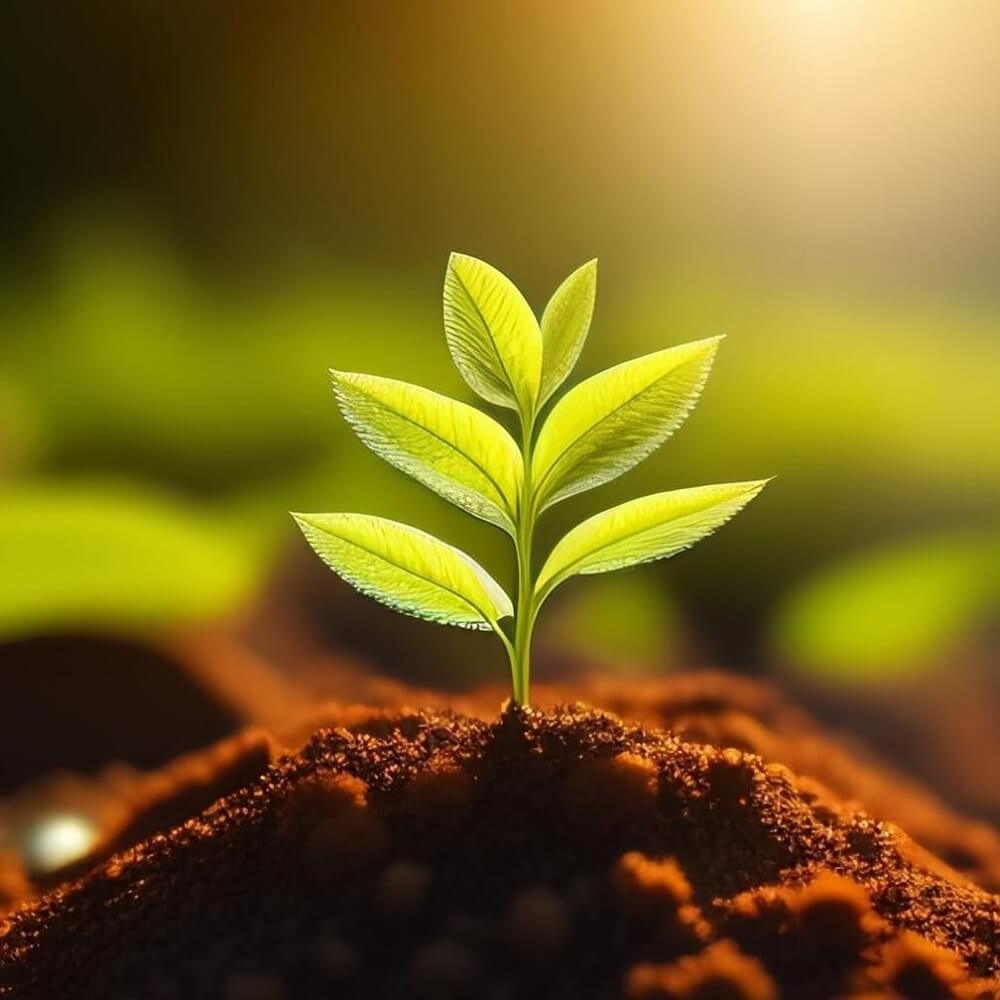
Our contributing author is a passionate advocate for eco-friendly living and sustainability. With a background in eco-life, they are dedicated to inspiring and empowering individuals to adopt environmentally conscious lifestyles. Through insightful articles, they share practical tips, innovative solutions, and thought-provoking perspectives to promote a greener, more sustainable world. Join them on the journey towards eco-smart living and discover how small choices can make a big impact. 🌱


